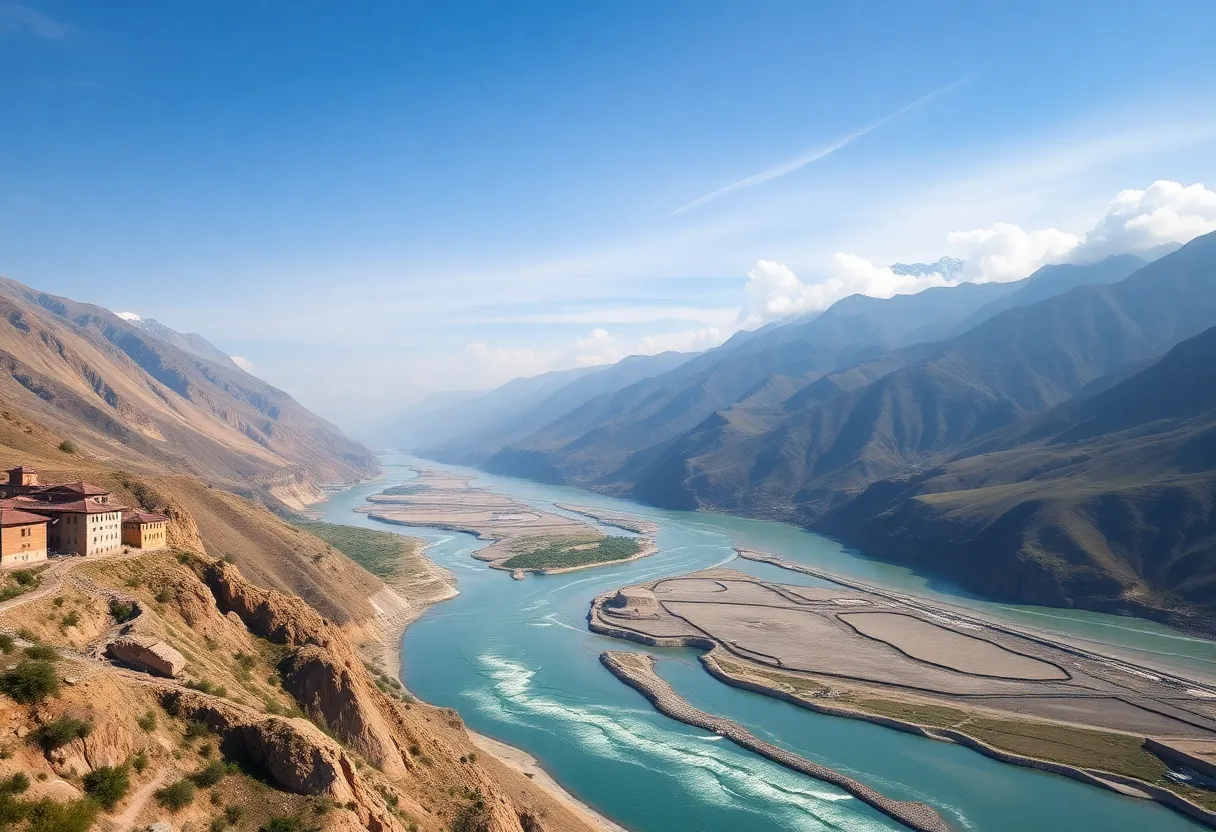News Summary
China has started construction on a mega-dam on the Yarlung Zangbo River, which could become the world’s largest hydroelectric power source. The project aims to meet energy demands in Tibet and provide electricity to other regions in China. While it promises substantial renewable energy benefits and economic growth, concerns arise over environmental impacts and geopolitical tensions with India, as the dam is located near the contentious border. Local displacement and ecological degradation are potential issues as the project progresses.
Lhasa, Tibet – China has officially begun construction on a mega-dam located on the Yarlung Zangbo River, which has the potential to become the world’s largest source of hydroelectric power. The project, which is expected to cost around 1.2 trillion yuan (approximately $167.1 billion), includes the building of five hydropower stations aimed at significantly boosting energy production.
Premier Li Qiang attended the ceremony marking the initiation of the dam construction, as reported by Chinese state media. This infrastructure endeavor has been in the works for several years, gaining approval from Beijing in December of the previous year. Apart from meeting the energy demands of the Tibet region, the electricity generated will primarily be intended for consumption in other areas of China.
The ambitious project forms part of China’s broader strategy to achieve carbon neutrality while bolstering its economic development goals in the often-overlooked Tibet region. It is calculated that once completed, the dam may produce a staggering 300 billion kilowatt-hours of electricity each year, substantially more than the current energy output of the controversial Three Gorges Dam on the Yangtze River.
India has expressed its concerns regarding the dam, raising alarms about potential repercussions for downstream nations. In January, India’s government highlighted the need for China to ensure that its activities upstream do not adversely affect the interests of countries relying on the Brahmaputra River. India’s Ministry of External Affairs asserted that it would vigilantly monitor the situation while seeking to protect its own water security.
In response to these concerns, China’s Ministry of Foreign Affairs emphasized that the dam construction would not negatively impact downstream regions. They also asserted a commitment to maintaining open lines of communication with surrounding countries regarding the project.
The Yarlung Zangbo River is known as the Brahmaputra in India and the Jamuna in Bangladesh and is critical for the water supply to over 1.3 billion people in ten different countries. Environmental groups, including the International Campaign for Tibet, have voiced their apprehension regarding the ecological implications of this significant infrastructure project on the delicate ecosystems of the Tibetan Plateau.
The Tibetan Plateau not only provides water for millions but also holds cultural significance, with the Yarlung Tsangpo being revered in Tibetan culture. One of the river’s main attributes is its extreme elevation, reaching around 5,000 meters (approximately 16,404 feet) above sea level, which contributes to its notable hydropower capacity, including a dramatic drop of 6,561 feet over a short distance.
Notably, the dam’s construction site is located just 30 kilometers (18 miles) from China’s border with India, in an area that has been historically contentious. The potential for geopolitical strain is heightened in this region, which has already witnessed tensions over territory and resource management.
Past projects in the area have raised eyebrows due to their displacement impacts. The construction of the Three Gorges Dam led to the relocation of approximately 1.4 million individuals, while the Yagen Hydropower Station in 2015 resulted in the displacement of around 2,000 people in Tibet. As the mega-dam project progresses, concerns linger over possible displacements and ecological degradation.
The planned infrastructure not only promises substantial renewable energy benefits but is also viewed as a means to stimulate local industries and create employment opportunities within Tibet, contributing to the region’s economic growth. As China moves forward with hydropower generation in the upper reaches of the Yarlung Zangbo River, it embarks on a project with influential implications, not only for its energy landscape but also for its relationships with neighboring nations.
Deeper Dive: News & Info About This Topic
HERE Resources
Additional Resources
- Al Jazeera
- Wikipedia: Yarlung Zangbo River
- NBC News
- Google Search: China hydropower dam Tibet
- Bloomberg
- Google Scholar: China hydropower dam Tibet
- Reuters
- Encyclopedia Britannica: Hydropower
Author: STAFF HERE CLEVELAND WRITER
The CLEVELAND STAFF WRITER represents the seasoned team at HERECleveland.com, your premier source for actionable local news and information in Cleveland, Cuyahoga County, and beyond, delivering "news you can use" with in-depth coverage of product reviews for personal and business needs, local business directories, politics, real estate trends, neighborhood insights, and state news impacting the region—backed by years of expert reporting and robust community input, including local press releases and business updates, while providing top reporting on high-profile events like the Rock and Roll Hall of Fame inductions, Cleveland International Film Festival, and holiday parades, alongside key organizations such as the Cleveland Clinic, Cleveland Orchestra, and Great Lakes Science Center, plus leading businesses in manufacturing and healthcare like Sherwin-Williams and University Hospitals, and as part of the broader HERE network including HEREDayton.com, offering comprehensive, credible insights into Ohio's vibrant landscape. HERE Cleveland HERE Dayton





